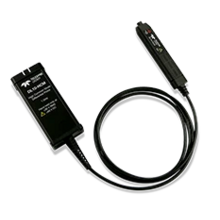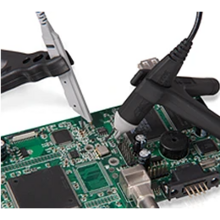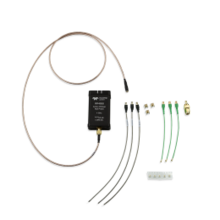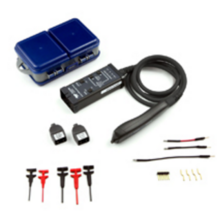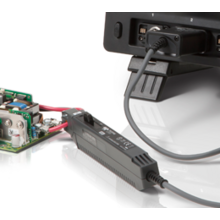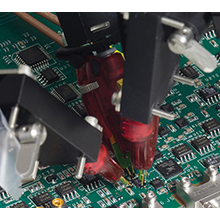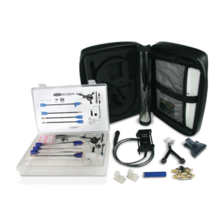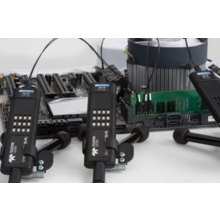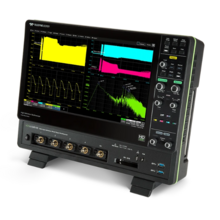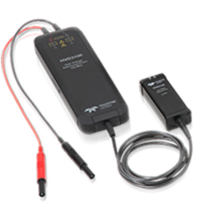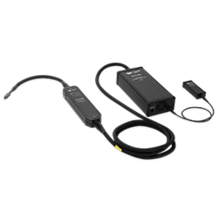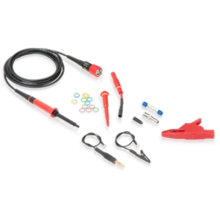Products
Displaying 1 - 12 of 39
Ideal probe for up to 48 V power conversion
250, 500 MHz and 1 GHz bandwidth
80 V dynamic range
60 V common mode
Highest accuracy
0.5% gain accuracy
Precision gain calibration
Best LF flatness (0.1 dB)
Lowest noise and highest rejection
Wide variety of tips
High performance solder-in
Browser
Single pins and header
Mini and micro grabbers
Socketed connections
High temp solder-in
Y-banana adaptor
ProBus active probe interface
The ZS Series probes provide high impedance and an extensive set of probe tips and ground accessories to handle a wide range of probing scenarios. The high 1 MΩ input resistance and low 0.9 pF input capacitance means this probe is ideal for all frequencies. The ZS Series probes provide full system bandwidth with all Teledyne LeCroy oscilloscopes with bandwidths of 4 GHz and lower.
Up to 4 GHz Bandwidth
±60 V Offset Capability
±800 mV Dynamic Range
50 kΩ DC Input Impedance
1.2x Attenuation for low additive noise
MCX terminated cable with wide variety of connections:
Solder-in (4 GHz)
Coaxial Cable to U.FL receptacle (3 GHz)
MCX PCB Mount (4 GHz)
Browser (500 MHz)
ProBus Interface
Fully Integrated: With the ProBus™ interface, the AP033 becomes an integral part of the oscilloscope. The probe sensitivity and offset can be controlled from the oscilloscope front panel, the probe front panel, or by using remote control commands (GPIB or RS-232). Sensitivity, offset, input capacitance, and common mode voltage range are displayed on the oscilloscope screen. When used with a LeCroy digital oscilloscope, no external power supply is required.
Easy to Use
No need to break the circuit or insert a shunt
Small form factors for use on crowded boards
Variety of Applications
Bandwidths up to 100 MHz
Peak currents up to 700 A
Sensitivities down to 1mA/div
High Precision Measurements
Low frequency accuracy of 1%
Integrated autozero capability
Fully Integrated with Teledyne LeCroy Oscilloscope
No additonal hardware is required
Power is supplied from oscilloscope ProBus connection
Automatic display of waveforms in Amps and calculated power traces scaled correctly in Watts
Degauss and Autozero directly from oscilloscope user interface
Differential active probes are like two probes in one. Instead of measuring a test point in relation to a ground point (like single-ended active probes), differential probes measure the difference in voltage of a test point in relation to another test point
Choice of 4 GHz or 6 GHz bandwidth models
Up to 5 Vpk-pk dynamic range with low noise
±3 V offset range
Low loading and high impedance for minimal signal disturbance
Ideal for DDR2, DDR3, LPDDR2
Deluxe soft carrying case
Innovative QuickLink architecture
Wide variety of tips and leads
Solder-In Lead
Optional Positioner (Browser) Tip
Quick Connect Lead
Square Pin Lead
HiTemp Solder-In Lead
Bandwidth models from 8 GHz to 30 GHz
Low loading and high impedance for minimal signal disturbance
Wide variety of tips:
Standard and high-sensitivity 30 GHz solder-in tips
High-temperature solder-in tip with 1-meter lead
QuickLink adapter for mixed-signal probing
Handheld browser tip
Tips for direct oscilloscope connection to CrossSync PHY protocol analyzer interposers
Built-in tip identification for simple setup and precise signal reproduction
Ideal for debug and validation of:
PCIe 1.0 to 6.0
DDR3/LPDDR3
DDR4/LPDDR4/LPDDR4X
DDR5
Other high-speed serial interfaces
Highest resolution - 12 bits all the time
Bigger Display, smaller footprint, most bench space
More capability, increased productivity
High voltage differential probes provide high CMRR over a broad frequency range (up to 400 MHz) to simplify the measurement challenges found in noisy, high common-mode power electronics environments. The probe’s design is easy-to-use and enables safe, precise high voltage floating measurements.
Ideal for GaN and SiC devices
Highest system accuracy
Fastest rise time
High CMRR - 160 dB
2000 Vrms input
6000 Vpeak transients
Up to 500 MHz bandwidth
Ideal for Surge/EFT testing
High voltage single-ended passive probes are suitable for a wide range of applications where ground-referenced high-voltage measurements must be made safely and accurately. There is also a sense pin to automatically configure the oscilloscope for use with the probe.
